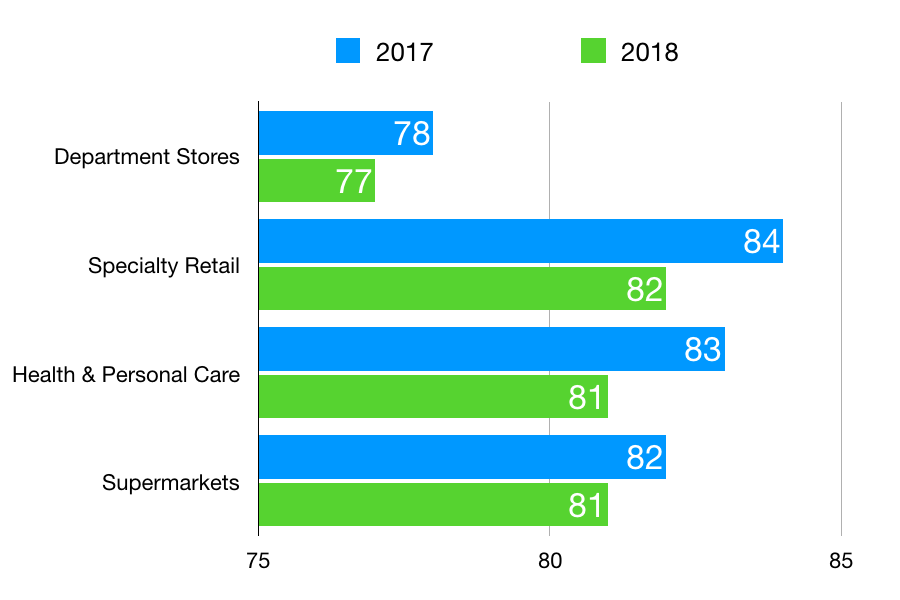Retail schedules can wreck havoc on employees' lives.
A few years ago, the New York Times published this heart-breaking story about a Starbucks barista whose work schedule made it a struggle to find a place to live, care for her young son, and go to school. She would often get her weekly schedule with just a few days notice, and her hours were wildly erratic. One schedule had her working until 11pm one evening and then reporting at 4am the next day.
Her story is sadly too common in retail and fast food industries.
Unpredictable schedules have a cascading effect. Employees struggle to escape poverty when they can't go to school or work a second job. Arranging childcare is a challenge when the parent works ever-changing hours. Showing up with a smile, or showing up at all, is a daily challenge.
This practice doesn't just harm employees. It hurts business. These ever-changing schedules often shrink profits in unseen ways.
This post highlights the results of a 2015 experiment that shows how more stable employee schedules are good for business. The lessons are incredibly relevant right now.
About the Experiment
A group of academic researchers partnered with the Gap to study the effects of more stable scheduling on retail performance. The experiment tested a number of changes to employee scheduling:
Schedules were published two weeks in advance
Employees could swap shifts with each other
Shift start and end times were standardized
Part-time associates were given at least 20 hours per week
On-call shifts were eliminated
On-call shifts require an employee to be available to work, but the shift might be cancelled just a few hours before it begins. This can be an extra burden because you can’t make any other commitments, but you aren’t guaranteed to get paid.
Two results really stood out:
Sales increased 7 percent
Productivity increased 5 percent
You can read the full report, or keep reading below for a synopsis.
Why don't companies offer stable schedules?
Labor is one of the biggest expenses for most retailers. The chaotic work schedules are created by algorithms designed to operate stores with as few employees as possible in an effort to keep costs low.
The formulas typically use several variables to forecast each store's scheduling needs for the week. Common variables include:
Regular sales patterns
Planned promotions
Merchandising tasks (ex: setting up a new display)
Employee training
Receiving and stocking inventory
These algorithms place a premium on flexibility to control costs, allowing new shifts to be added or deleted on short notice. Decision-making is centralized, and store managers are often given little, if any, discretion to alter these schedules.
Unfortunately, these formulas inevitably allocate too few hours to stores.
How scheduling algorithms fail
There are a few different ways that scheduling algorithms cause stores to be short-staffed.
The estimates for various merchandising tasks are often inaccurate. One large retailer estimated the hours required to complete a new product display by timing how long it took employees to create a sample. The estimate was almost always too low because the sample was created in a corporate conference room, not on a busy retail floor with constant interruptions from customers.
Store managers aren’t add additional hours, so they’re forced to “borrow” staffing from other tasks. This typically comes at the expense of sales and customer service.
Some algorithms fail to account for overlapping needs.
Saturday morning was the busiest day of the week for one retail store. It was also the day when the weekly stock shipment arrived. The store lacked a back stock area to store new product, which meant new shipments had to be put on the sales floor immediately. The store manager wasn't given enough hours to handle the stock shipment and adequately serve customers, so sales ultimately suffered.
There many other hidden costs of a lean schedule:
Theft goes up with fewer associates on the sales floor.
Customers purchase less when they can’t get timely assistance.
Inventory is harder to manage.
Inventory can be really sneaky. Customers often move inventory around a store, such as leaving clothing in a fitting room or deciding against a purchase while at the cash register. The store can lose sales if employees aren't available to quickly re-shelve those items.
How to implement stable shifts
Retail businesses will always need flexibility to meet changes in demand. The secret is to start with a core schedule and flex up by adding more hours.
All employees, including part-time workers, are given a core schedule. These are predictable days and hours when they can be expected to work each week.
Flexibility is achieved by adding hours when needed. Part-time employees are often open to working more hours, and can be given additional shifts or asked to work longer. Full-time employees can occasionally be asked to work overtime when the store is really busy.















